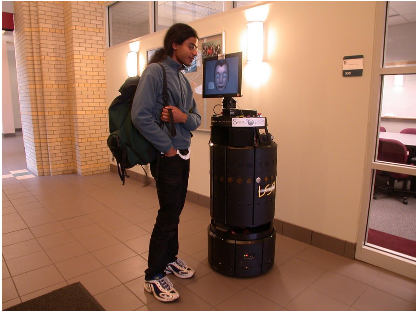Q2. What is the need for field studies to examine how people interact with robots?
Given that the authors expect social robots to play increasingly larger roles in daily life, there is a strong need for field studies to examine how people behave when robots are introduced into their activities.
Q3. What are the main advantages of using robots in therapy?
Others important advantages are:• Robots can provide a stimulating and motivating influence that make living conditions or particular treatments more pleasant and endurable, an effect that has particular potential for children or elderly people.
Q4. What are the measures for characterizing the mental models people use when interacting with robots?
The measures consist of: scales for rating anthropomorphic and mechanistic dimensions; measures of model richness or certainty; and measures of compliance with a robot’s requests.
Q5. What are the two critical communicative needs of a fetch-and-carry robot?
Following their ethic of task-based and contextbased design, Severinson-Eklundh et al. identified two critical communicative needs of a fetch-andcarry robot.
Q6. What is the biggest obstacle in the creation of compelling anthropomorphic robots?
The creation of compelling anthropomorphic robots is a massive engineering challenge; yet, in the case of both Sony and Honda it is clear that the single largest hurdle involved actuation.
Q7. How can students who have low self-esteem become empowered towards technology?
Through such empowerment, fear or shyness towards technology can be transformed dramatically into interest in exploring technology and even altering its course.
Q8. What do they believe will lead to better understanding of human behavior?
Aoki et al. contend that studies of rat-like robots will lead to better understanding of human behavior, in the same manner that animal experimentation (especially on rats) does.
Q9. What do they argue is constraining and unable to scale?
They contend that directed instruction, whereby a human teaches a robot using a carefully engineered feedback and reward mechanism, is constraining and ultimately unable to scale.
Q10. What is the argument that a robot needs to be similar to a human?
In part, the argument is that in order for a robot to interact with humans as humans do (through gaze, gesture, vocalization, etc.), it must be structurally and functionally similar to a human.
Q11. What is the reason to believe that a robot would have a compelling personality?
There is reason to believe that if a robot had a compelling personality, people would be more willing to interact with it and to establish a relationship with it[27,116].
Q12. What are the three primary types of dialogue?
Although human-robot communication can occur in many different ways, the authors consider there to be three primary types of dialogue: low-level (pre-linguistic), non-verbal, and natural language.


![Fig. 8. Mori’s “Uncanny Valley” (from [76]).](/figures/fig-8-moris-uncanny-valley-from-76-4yl2dhcn.png)


